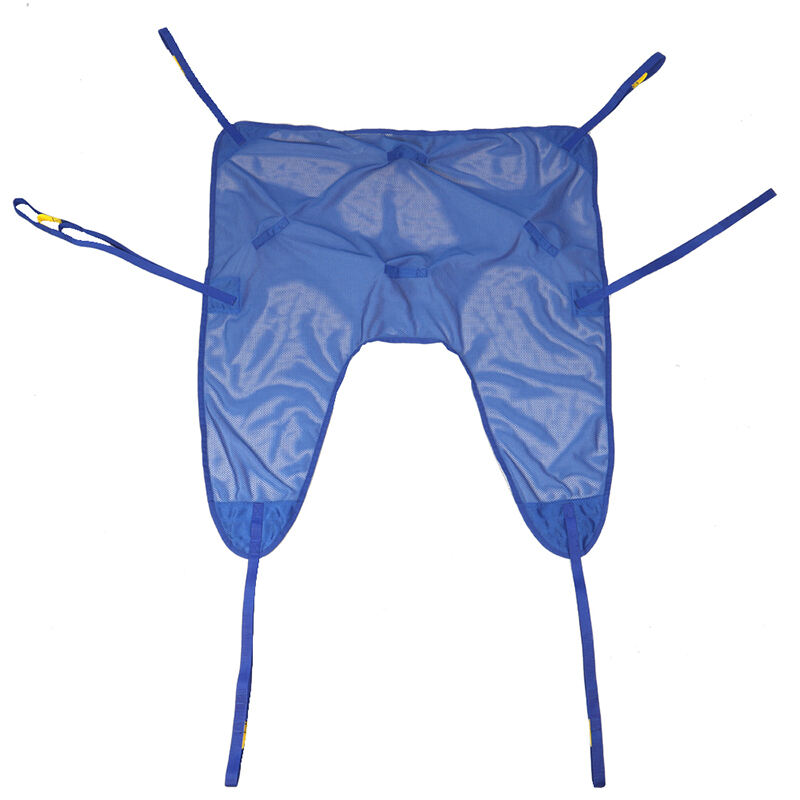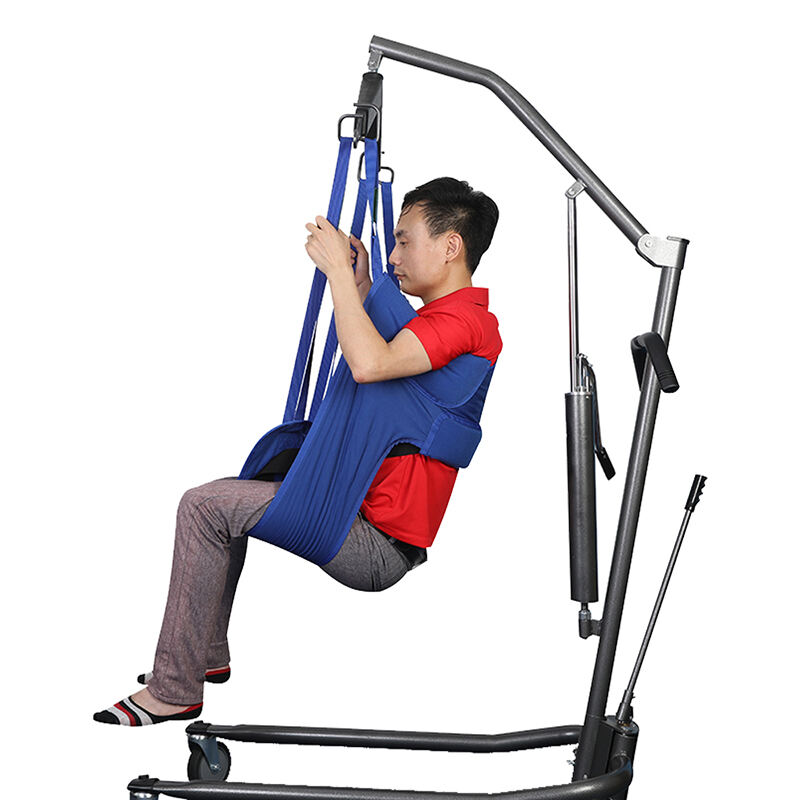Comprehensive Guide to Patient Lift Slings for Caregivers
Understanding Patient Lift Slings
Patient lift slings are essential tools designed to assist caregivers in safely and efficiently moving patients with limited mobility. These slings work by evenly distributing a patient's weight, which significantly reduces the physical strain on caregivers' bodies during transfers. Whether transferring a patient from a bed to a wheelchair or repositioning them within a bed, lift slings enhance the safety and comfort of both the patient and the caregiver.
The use of patient lift slings minimizes the risk of injury during transfers, which is crucial for both the caregiver and the patient. This enhanced safety ensures that transfers are not only less physically taxing for caregivers but also dignified for patients, offering necessary support during such processes. By integral use of slings, caregivers can maintain the quality of care while safeguarding their health, thereby emphasizing the indispensable role these devices play in healthcare settings.
Types of Patient Lift Slings for Caregivers
Understanding the various types of patient lift slings can greatly enhance caregiving efficacy and safety. Divided leg slings, for instance, are designed to offer stability while allowing for natural leg movement during transfers. These slings are ideal for patients who maintain some upper body control, providing comfort and ease during the transition process. Their unique design benefits patients by facilitating individualized leg positioning, crucial for maintaining stability during transfers.
Full body slings offer comprehensive support, making them indispensable for patients fully dependent on caregivers. These slings envelop the patient entirely, ensuring safe and effective transfers by cradling the body from head to toe. Full body slings are particularly beneficial for those recovering from significant surgeries or those with severe mobility limitations, as they help maintain the patient's dignity and safety during transfers.
Toileting slings are specifically crafted for safe and dignified toilet transfers. These slings often feature openings that facilitate easy clothing adjustment, ensuring privacy and convenience for the patient. Their design prioritizes the patient's dignity and comfort, helping to reduce stress for both patient and caregiver during bathroom visits.
Additionally, there are specialty sling types designed for specific needs, such as bariatric patients or individuals requiring unique positioning. These slings accommodate a wide range of conditions and are adaptable to fulfill unique mobility requirements. Their specialized nature emphasizes the importance of tailoring equipment to meet individual patient needs, ensuring optimal support and safety during routine transfers.
Key Features to Consider
When choosing a patient lift sling, weight capacity and size are essential features to consider for ensuring user safety and comfort. Each sling is designed with specific weight limitations. It is vital to select a sling that appropriately fits the patient's body dimensions, taking into account height, weight, and girth measurements. This careful selection minimizes the risk of accidents during transfers and ensures the patient remains secure throughout the process.
Material selection significantly affects the user's comfort and the caregiver's ease of use. Mesh slings provide breathability and are ideal for quick drying, making them suitable for bathing or for patients prone to sweating. On the other hand, padded slings offer increased comfort and are beneficial for patients with sensitive skin or requiring extended support. The decision between mesh versus padded slings should be guided by the patient's individual needs and the context of the sling's use.
Finally, special features aimed at enhancing caregiver comfort should not be overlooked when selecting a sling. Features such as adjustable straps allow for a custom fit, facilitating smoother transfers. Additionally, slings with simple handling designs and easily accessible components contribute to a more efficient and less physically taxing experience for caregivers. These enhancements not only improve the caregiver's experience but also ensure that transfers are completed safely and smoothly, reducing the risk of strain or injury.
How to Choose the Right Sling for a Patient
Choosing the right sling for a patient begins with assessing their specific needs. Evaluate the patient's mobility level, weight, and size to ensure a suitable fit. It's also essential to consider any medical conditions such as skin integrity and comfort requirements. This personalized assessment helps in selecting a sling that provides optimal support and safety for the patient during transfers. For instance, a patient with compromised skin integrity might require a padded sling to prevent skin breakdown.
Another crucial factor is checking the compatibility of the sling with existing lifting equipment. This ensures the safety and efficiency of patient transfers. Verify that the sling's attachments are compatible with your lift system, whether it's a floor lift, ceiling lift, or sit-to-stand lift. This compatibility check is vital to prevent accidents and ensure smooth operation during transfers, as mismatched equipment can lead to dangerous situations.
Product Recommendations
When selecting the right patient lift sling, there are several options tailored to varying needs and circumstances. Here are three patient lift slings that offer specific advantages based on patient requirements:
1. Mesh Divided Leg Sling-CGSL229: This sling is perfect for patients who need assistance yet still possess some leg mobility. The sling's design features a weight capacity of 600 lb, ensuring robust support during transfers from bed to wheelchair or shower chair. Constructed from comfortable polyester mesh material, it's ideal for use in bathing and toileting scenarios, offering both durability and ease of adjustment with its six hanging loops.
2. Mesh Full Body Sling with Commode Cut-Out-CGSL208: Designed for patients who require comprehensive support, this sling additionally accommodates toileting needs, preserving the patient's dignity. The high back section provides essential head and neck support while the padded under-thigh area adds comfort. Its quick-drying mesh fabric makes it suitable for a variety of settings.
3. Deluxe Padded Toileting Sling-CGSL220: Combining exceptional performance with patient comfort, this transfer sling is engineered for convenient toileting. It features a padded back for lumbar support and individual leg support to enhance security and ease for both patient and caregiver during transfers.
These patient lift slings are carefully crafted to cater to diverse patient needs, ensuring safety, comfort, and ease during transfers.
Safety Measures and Best Practices
Ensuring the safety and effectiveness of patient lift slings starts with regular maintenance and inspections. Consistent checks on sling integrity and overall equipment condition are crucial in preventing failures. Manufacturers provide specific guidelines for these checks, highlighting areas such as fraying straps or mechanical wear that could compromise safety. Adhering strictly to these guidelines helps in early identification of potential issues, reducing the risk of accidents during patient transfers.
Another vital aspect of safe practice is ensuring caregivers receive adequate training in equipment use. Proper training empowers caregivers to use lifts efficiently, minimizing errors that could lead to injuries to both patients and caregivers themselves. Training typically covers equipment operation, proper positioning of slings like patient lift slings, and specific techniques for various patient needs. By prioritizing training, healthcare facilities enhance their safety protocols and ensure a smoother, more secure transfer for patients. This holistic approach significantly contributes to creating a safer environment for everyone involved in the caregiving process.
Improving Patient Transfers with Lift Slings
Enhancing safe healthcare practices, utilizing the right patient lift slings can significantly minimize risks for caregivers. By choosing appropriate slings, the incidence of musculoskeletal injuries among caregivers can be notably reduced, consequently promoting a safer work environment. For instance, a study by the Bureau of Labor Statistics reveals that healthcare workers experience one of the highest rates of musculoskeletal disorders due to heavy lifting tasks. By integrating transfer slings into daily routines, caregivers can mitigate these risks and focus on providing better care without physical strain.
In addition to safety, patient lift slings greatly enhance patient comfort and dignity during transfers. Selecting slings that meet the specific needs of patients offers a more respectful and comfortable experience, ultimately promoting emotional well-being. For example, toileting slings provide an accessible design for personal care activities, reducing the patient's discomfort and maintaining dignity throughout the process. Patient-centered care approaches that prioritize comfort and respect during transfers foster trust between patients and caregivers, thus improving the overall quality of healthcare services.

 EN
EN































